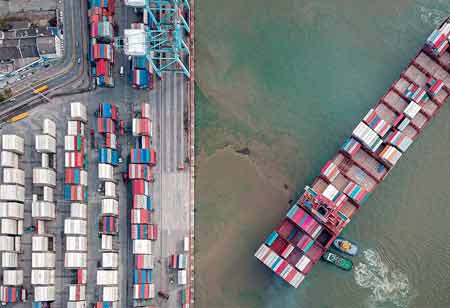THANK YOU FOR SUBSCRIBING
THANK YOU FOR SUBSCRIBING

By
Logistics Transportation Review | Tuesday, April 08, 2025
Stay ahead of the industry with exclusive feature stories on the top companies, expert insights and the latest news delivered straight to your inbox. Subscribe today.
Rigging techniques are crucial in manufacturing. They optimize operations, enhance safety, and ensure the successful movement and installation of heavy equipment and materials.
FREMONT, CA: Rigging is a crucial aspect of manufacturing, ensuring the efficient movement and installation of heavy equipment, machinery, and materials. Mastering rigging principles, selecting suitable equipment, and implementing best practices can improve efficiency, reduce downtime, and mitigate risks. Investing in training, certification, and continuous improvement fosters a safety culture, contributing to overall manufacturing operations' productivity and success.
Fundamental Principles of Rigging: Manufacturing requires using ropes, chains, slings, hoists, and cranes to lift, move, and position heavy loads. Basic principles include load calculation, center of gravity determination, and choosing the right rigging equipment based on load characteristics.
Types of Rigging Equipment:
Slings and Chains: These are versatile tools used to attach to and support loads. Slings can be made from wire rope, synthetic fibers, or chains, each suited for different load capacities and environmental conditions.
Hoists and Cranes: Hoists lift and lower loads vertically, while cranes provide horizontal movement and precise positioning. The appropriate hoist or crane depends on load weight, size, and maneuverability requirements.
Safety Considerations:
Load Capacity and Stability: A load's weight must be considered when rating rigging equipment. Overloading may result in equipment malfunctions and accidents.
Inspecting Equipment: Regular inspection of the rigging equipment guarantees that it satisfies safety requirements and is operational.
Clear Communication: Effective communication between riggers, operators, and spotters ensures safe and coordinated movements.
Choosing the Right Rigging Techniques
Determining the Rigging Method:
Direct Rigging: Attach lifting equipment such as slings or hooks to the load.
Indirect Rigging: This entails using additional tools, like raising beams or spreader bars, to distribute the load and lessen load stress uniformly.
Specialized Rigging Techniques:
Tandem Lifts: Involving multiple cranes or hoists working in tandem to lift oversized or hefty loads.
Skidding and Rolling: Using rollers or skids to move loads horizontally across surfaces reducing the need for excessive lifting.
Environmental Factors:
Space Constraints: Rigging in confined spaces requires careful planning and specialized equipment to maneuver safely.
Outdoor Conditions: Weather conditions like wind, rain, or extreme temperatures can affect rigging operations, necessitating additional precautions and equipment.
Implementing Best Practices
Training and Certification:
Qualified Personnel: Ensure rigging operations are conducted by trained personnel who understand load dynamics, equipment limitations, and safety protocols.
Certifications: Rigging certifications such as those from organizations like OSHA (Occupational Safety and Health Administration) validate competency in safe rigging practices.
Planning and Preparation:
Risk Assessment: Conduct thorough risk assessments before rigging operations to identify hazards and implement appropriate controls.
Pre-Lift Meetings: Discussing the rigging plan, roles, and safety measures with the entire team ensures everyone is aligned and aware of their responsibilities.
Continuous Improvement:
Feedback and Evaluation: Gather input from rigging operations to identify areas for improvement in efficiency, safety, and equipment utilization.
Training Updates: Stay updated with advancements in rigging technology and safety standards through regular training and professional development.
I agree We use cookies on this website to enhance your user experience. By clicking any link on this page you are giving your consent for us to set cookies. More info





